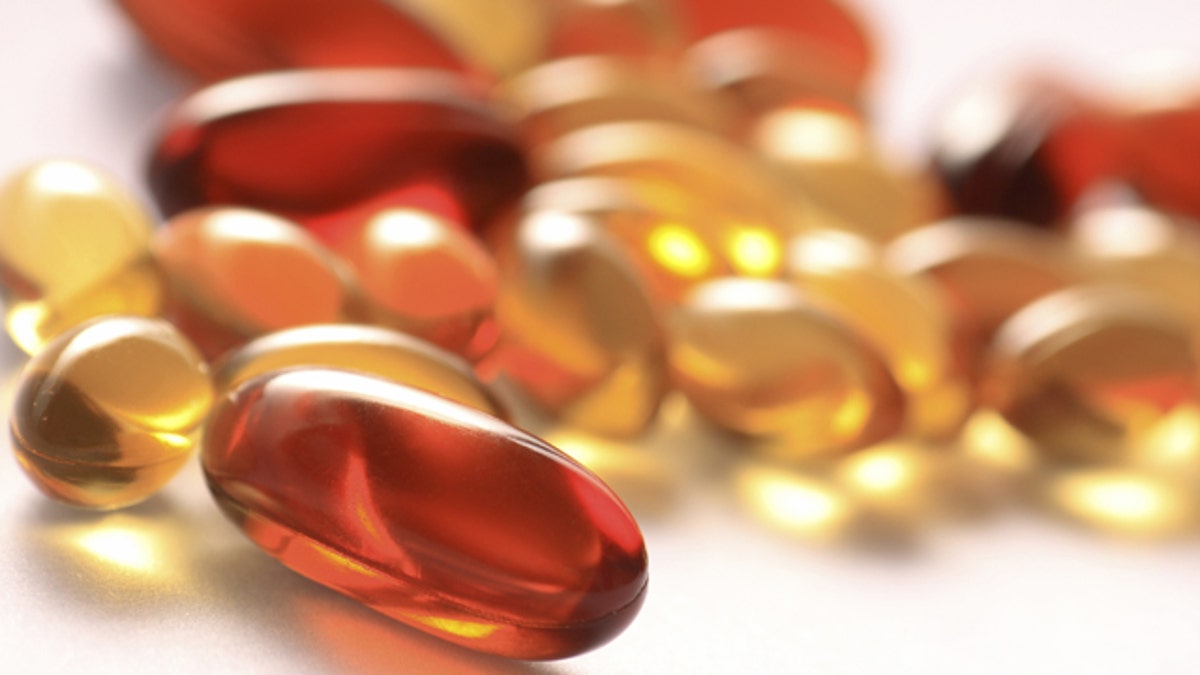
(iStock)
Elderly women who take vitamin D3 supplements may have a small survival advantage over those who don't, a new research review concludes, although they also raise their risk of kidney stones.
The review of 50 clinical trials involving more than 94,000 elderly adults found that those randomly assigned to take vitamin D3 were six percent less likely to die during study periods averaging two years than participants given inactive pills or no treatment.
That reduced risk of death, researchers say, translates into 200 elderly adults having to take vitamin D3 for about two years in order to save one additional life.
Many questions remain, however. For one, the trials included mostly women, so it's not clear if men would stand to gain the same benefit.
Moreover, it's not clear why women given vitamin D3 had better survival odds -- or what form or dose of the vitamin might be best.
Many of the studies focused on elderly adults living in nursing homes, who are likely to be deficient in vitamin D, frail and at risk of falls.
Vitamin D is needed for healthy bones, and a number of studies have suggested that supplements may lower elderly adults' risk of falls and fractures -- which can prove fatal.
"These preventive effects could likely explain some or all of the mortality reduction we observed," Dr. Christian Gluud, the senior researcher on the new study, told Reuters Health in an email.
However, he said, more research is needed to understand why women who took vitamin D3 had a lower death rate.
Although Gluud's team looked at studies involving four different forms of vitamin D, they found that better survival was specifically linked to vitamin D3 (cholecalciferol), which is more potent and readily absorbed than vitamin D2 (ergocalciferol), the form often found in multivitamins.
But it's not clear whether that's because only vitamin D3 is effective, or because too few trials have tested D2 or other forms of the vitamin, according to Gluud, who works with the Cochrane
Collaboration, an international research organization that evaluates medical evidence and published the current findings.
As for the optimal dose of vitamin D for elderly people's health, that too remains to be seen, Gluud said.
In their review, he and his colleagues saw a reduced risk of death with vitamin D3 doses of 800 international units (IU) or less. But, Gluud noted, few trials have tested higher doses.
The benefit his team found is, however, in line with current recommendations.
Last year, the Institute of Medicine (IOM), a scientific advisory panel to the U.S. government, said that most people need 600 IU of vitamin D per day, while adults older than 70 should strive for 800 IU.
Older people are at increased risk of vitamin D deficiency because their bodies are less efficient at producing the vitamin after exposure to the sun, and because their kidneys are less able to convert vitamin D to its active form.
But in its recommendations, the IOM also sought to temper some of the enthusiasm over vitamin D in recent years.
A flurry of studies has linked higher vitamin D intake to lower risks of everything from diabetes, to severe asthma, heart disease, certain cancers and depression.
The problem with those studies is that they were observational -- which means that researchers looked at people's vitamin D intake, or their blood levels of the vitamin, and whether they developed a given health condition. Those studies cannot prove cause-and-effect.
And the IOM said that, other than benefits for bone health, there is insufficient evidence that vitamin D thwarts any specific health condition.
So what should older adults do about vitamin D? They can follow the IOM recommendations on intake levels, and choose food sources of the vitamin -- including fatty fish like salmon and mackerel, and fortified dairy products and cereals.
As for vitamin pills, Gluud said that older adults can talk with their own doctors about whether that's a good idea.
He added that vitamin supplements should be seen as medications that could potentially affect your life expectancy in a positive or negative way.
"Always discuss any medication with your physician," Gluud advised.
The IOM set an upper limit for vitamin D intake, at 4,000 IU per day. Taking too much can lead to vitamin D toxicity, which causes symptoms like nausea, vomiting, constipation and poor appetite. It can also lead to kidney stones and, by raising calcium levels in the blood, heart rhythm disturbances.
In this study, Gluud's team found that vitamin D3 taken along with calcium raised elderly adults' risk of kidney stones by 17 percent.
Gluud said that more clinical trials are needed to compare the effects of different doses of vitamin D, and to study the health effects in elderly men and younger people.
There's also little known about whether the cost of widespread vitamin D use would be worth the benefit. But the vitamin is cheap -- at about $10 for a two-month supply.
